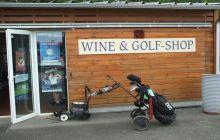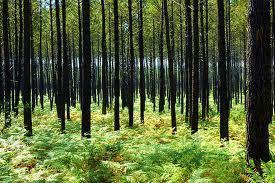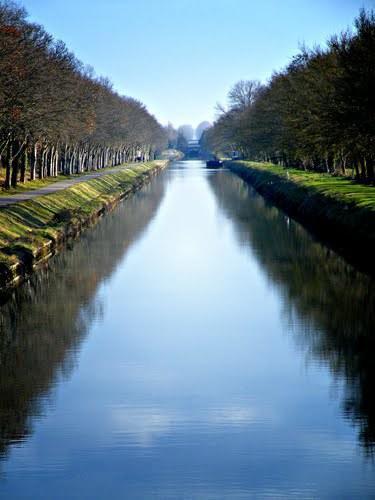Welcome to binNotes | a wine blog.
by. L.M. Archer, FWS
Today binNotes takes a mulligan on the topic of Golf and Bordeaux…two of life’s greatest challenges.
Follow binNotes: | Twitter | Pinterest | Facebook
Back, by popular demand, here’s a previous binNotes’ post on the topic of golf and Bordeaux…
Left Bank, Right Bank, WTBD?
Understanding Bordeaux’s subregions is a lot like understanding golf – it’s all in the terrain, or terroir. Winegrowers, like skilled golfers, play it where it lays – in Bordeaux playing through some atypical water hazards, sand traps, and bunkers.

Bordeaux subregions include the Left Bank, Right Bank, and Entre Deux Mers. So What’s the Big Difference?
Left Bank
You don’t want to snag a left hook on the Left Bank. This predominately flat expanse borders the Atlantic Ocean, and falls west of the Gironde Estuary and Garonne River. It also boasts Les Landes, Europe’s largest forest – 2.5M acres of pine trees to foil any bank shot.
In Left Bank’s Médoc and Pesssac Léognan areas, home to such prestigious Domaines as Chateaux Margaux, Mouton-Rothschild, and Haut-Brion, the warm sand and gravel soils favor Cabernet Sauvignon and Petit Verdot varietals- making Bordeaux the Biggest-Little-Cabernet Sauvignon-Growing-Wine Region in the world. Wines here hit the pin with firm structure, high tannin, pigment, acid, carrying hints of cassis, cedar, and graphite.
Thanks to the fog-inducing, botrytis-producing double-bogey action of the Ciron River cold air meeting Garonne River warm air in The Graves and Sauternais areas, white dessert wines find their sweet spot here, along with tournament-worthy dry whites composed primarily of Sémillon and Sauvignon Blanc.

Right Bank
No shanking on the Right Bank! This stretch of Côtes (slopes), worm-burning plateaus, and knock-down valleys of cold soils clay and limestone favor Merlot and Cabernet Franc, yielding soft, silky, high acid dry red wines with notes of dark plum, walnut and prune. Hole-in-one AOC’s in the Right Bank’s Libornais area include Pomerol and St.-Èmilion.

Entre Deux Mers
Fore! Entre Deux Mers, meaning ‘between two seas,’ falls between the Garonne and Dordogne Rivers, and enjoys the highest altitudes, greatest terrain variations, and most wine varieties in the Bordeaux region. We’re talkin’ a little bit o’ sand and gravel, a little bit o’ clay and limestone, and a whole lotta water, producing above par dry red and whites. Same story, different side of the Garonne River regarding the fog-borne botrytis sweet white wines.

Unlike golf, in the winemaking world, there are no mulligans. Every shot, or harvest, counts. And in Bordeaux, it’s a game played by masters. Santé!
Care to share? Leave your comments below…and thanks for stopping by!
More of binNotes on Bordeaux:
Bordeaux 2012 St.-Emilion Reclassification – WDIAM?
There Will Be Blood – and Wine
Follow binNotes: | Twitter | Pinterest | Facebook
Copyrighted 2012-2014. All Rights Reserved.
Images courtesy: thetraveleditor.com; domainelesoreades.com; allfrenchservices.com; edmpanamorio.com.

